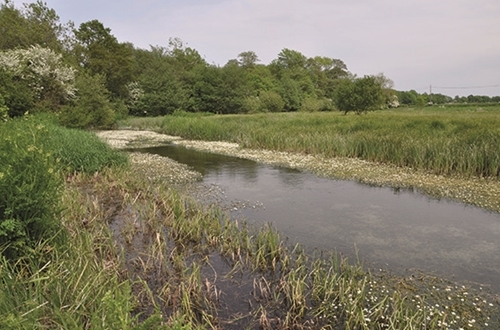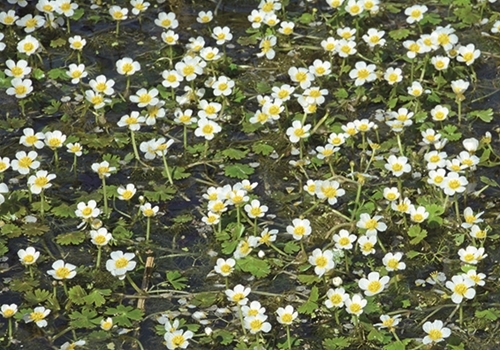
This work was made possible with the kind support of The G & K L B Boyes Charitable Trust
New research has found that water crowfoot - an aquatic plant found commonly in lowland rivers – has multiple benefits for young Atlantic salmon, and that active management of the plant could be important for the conservation of this iconic and declining fish. Water crowfoot (Ranunculus sp.) is an aquatic member of the buttercup family and is found in clean, gravelly lowland watercourses. A classic component of chalk rivers, this plant is vulnerable to low flows, pollution and physical loss from leisure activities, weed cutting and swan grazing.
The PhD research project conducted by Jessica Marsh at the GWCT, in conjunction with Queen Mary University of London (QMUL), has shown that high coverage of water crowfoot is associated with more and better-growing young salmon. Her findings are significant because populations of salmon are declining steeply, and a part of the solution might be to restore high coverage of water crowfoot in lowland salmon rivers.

Jessica explains: “Populations of wild Atlantic salmon are in decline throughout most of their range, and the rivers of southern England are no exception. Brown trout are also facing pressures from predation, habitat degradation, pollution and warming water temperatures. It is important to ensure that young fish have the best possible habitats in which to thrive. Our research identified that instream aquatic vegetation has benefits for young salmon (and to a lesser extent, trout), and demonstrates that restoration aims for lowland rivers might be achieved through the promotion and even enhancement of naturally occurring Ranunculus beds to improve the production of both salmon and trout.”